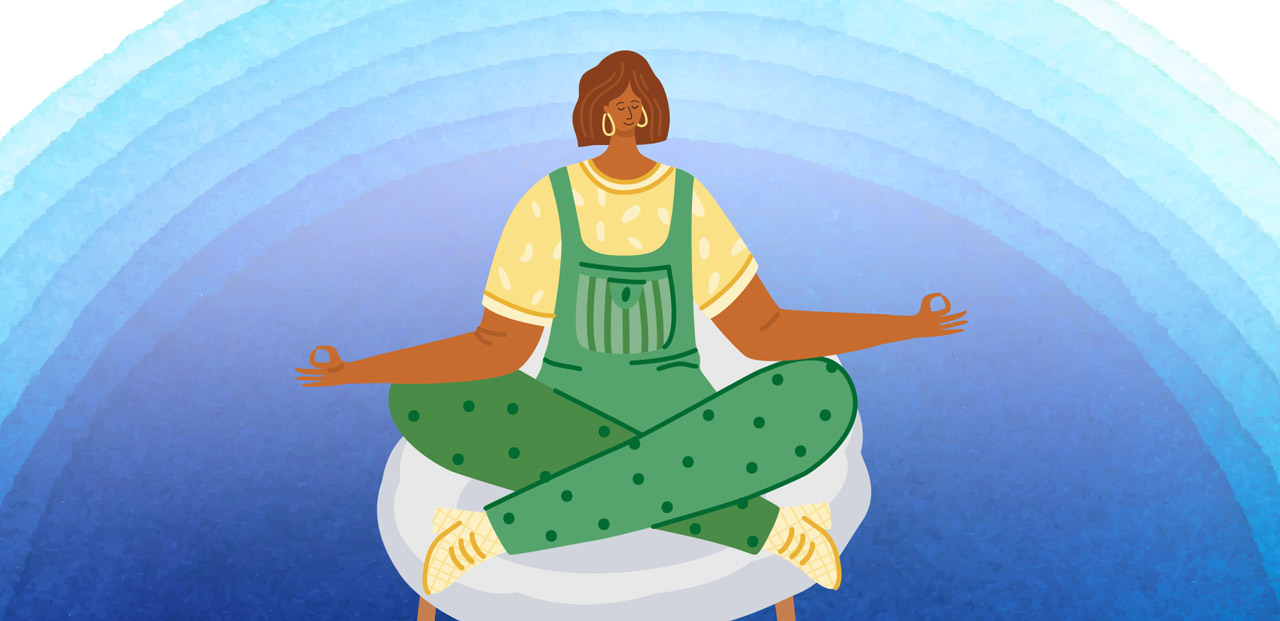“Not everyone has the space or ability to get down on the floor to do yoga,” explains Mahoney. “Chair yoga can accommodate every age and skill level, and we can modify movements according to physical health. Plus, during telehealth sessions, we’re all sitting in chairs already.”
The benefits of yoga include improving flexibility and balance, reducing blood pressure, and easing anxiety and depression. With practice, yoga helps people reunite the breath and the body to connect with the energy within themselves.
Each chair yoga session features stretches and focused breathing exercises that patients can later practice on their own. Mahoney often suggests setting an intention for each practice, such as gratitude. She provides insight on how the movements positively impact the body and mind, and participants share feedback with the group. In addition, depending on group preference on any given day, Mahoney may supplement chair yoga with art therapy to offer participants another way to express themselves.
“We keep our practice light and build in laughter,” says Mahoney. “With the collective benefits of yoga and the support of the group practicing together, patients can minimize isolation and uplift their mood.”
A Focus on BreathingHelping patients reconnect with their breath can bring them from a sympathetic nervous system response to a parasympathetic response, decreasing the heart rate and pulse. Mahoney recommends this simple exercise:
|
Article as seen in the Spring 2021 issue of Princeton House Behavioral Health Today.



